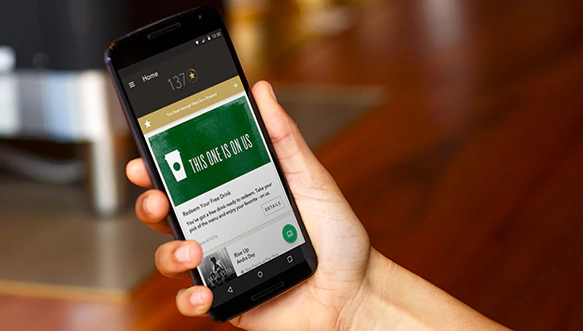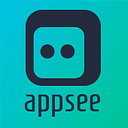
5 Mobile Apps that have Completely Nailed Mobile Personalization
Today’s apps are built as partially-living digital organisms. Back in the day, older apps were static in their design and content. They were offering the same experience to everyone, regardless of who, or what, the user was. After being installed on a device, today’s apps will slightly change and modify themselves in various ways to make sure they deliver most relevant content, resulting in an awesome user experience.
That’s what we call mobile personalization, and it’s one of the most important aspects of mobile apps today. It is important because it helps build awesome user experience, and awesome user experience is what makes an app successful.We also predict this trend will stick around for a long time.
User experience is a must because the competition is too fierce (more than 5 million apps across Google Play / Play Store). People have too many apps to choose from, making them harder to reach and retain. From a mobile professional’s point of view, today’s users are more complicated than ever before.
So the path goes like this:
Crowded app stores have forced app pros to focus on awesome user experience to reach and retain users– awesome user experience has prompted mobile personalization.
Which brings us to today. And today, we’re going to show you five examples of mobile apps that have completely nailed mobile personalization. Hopefully you’ll be able to draw inspiration from them and build even better apps tomorrow. Here we go:
Mobile Personalization Pro #1: Drippler
Android | iOS

Drippler is a mobile app which sends the user recommendations, tips and tricks, about the smartphone they’re using. Once installed, it scans the device to learn about it (manufacturer, model, operating system version, etc.), and then creates a newsfeed of articles related to patches, upgrades, new versions and other things for the smartphone and the apps on it. After the initial batch of articles, it learns from the user, tracking which articles are opened and which are ignored, to better tailor future recommendations. One of the reasons why the app was so successful we actually already mentioned in the beginning of this piece — the sheer volume of apps available makes smartphone/app version and patch tracking difficult. With Drippler, users can maximize the potential of their smartphone, and judging by the reviews on the Google Play Store, it’s doing a mighty fine job, too.
Mobile Personalization Pro #2: Starbucks
Android | iOS | Windows Mobile

One of the biggest café chains in the world has recently redesigned its mobile app to place more emphasis on personalization, highlighting the importance of the trend. Starbucks’ app uses information it already has on its customers (for example, the type of coffee they usually drink, or the time of day they usually enter one of their branches) to craft special offers, discounts, or coupons. A user who mostly drinks decaf might be offered a new decaf product when he/she enters the store (or walks close nearby), while someone who never buys sweets could be offered a discount to try one. The app also makes it easier for users to track the Starbucks loyalty program, and highlights the song playing inside the store.
According to Business Insider, the app’s results are clearly visible: more visits to the store, and more spending. But perhaps the biggest proof of the importance of app personalization lies in the words of Matthew Ryan, Starbucks’ global chief strategy officer,”Any screen can become a personalized screen moving forward.”
Yes, mobile personalization is that potent, Starbucks wants to extend it beyond the app, to drive-thru screens and smartwatches.
Mobile Personalization Pro #3: Nike+ Run Club
Android | iOS

Nike is another great brand which redesigned one of its apps to make more room for mobile personalization. Its fitness app, Nike+ Run Club, received a complete makeover over a year ago, allowing users to choose a workout plan, which then adapts (on its own), depending on the progress the users make. Basically, users choose what they want to achieve and as they go, the app tracks the progress. It then uses the information on that progress, to tailor the workout routine for best results. It truly feels like a real, living fitness instructor in your pocket. Commenting on the changes, Greg Ng, vice president of digital at PointSource, hit the nail on the head, saying “Without this level of personalization, users won’t receive the user experience they want, and will likely abandon the app.”
Each person’s body is unique, and there’s no such thing as a one-size-fits-all workout routine, making mobile personalization in sports vital. The strategy is obviously working, as both user and media reviews have been overwhelmingly positive.
Mobile Personalization Pro #4: Airbnb
Android | iOS

When Airbnb released a new update to its app, back in August 2016, it announced it with these words,”The newly updated Airbnb mobile app has personalization at its heart.” And boy does it.
The app monitors the user’s trips, travelling preferences and plans, and uses that information to offer the utmost personalized experience. Basically, it tries to match these preferences with accommodations which it thinks would suit the user best. But it’s not just about finding accommodation. Airbnb also offers personalized tips for things like restaurants, clubs, places to see, tourist attractions and so forth. If you’re a sports fan, Airbnb might recommend a sport museum, instead of tickets for a concert.
This type of personalization, especially when it comes to travel, is noteworthy for two reasons:
1) There’s a sea of places to choose from
2) Everyone’s tastes in destinations, accommodation types, food and drink, are vastly different
In such an environment, it’s easy to get it wrong. A ruined travel experience sticks around for life, and if they used Airbnb for it, they’ll remember that, too. It is essential for Airbnb to get this one right. This type of personalization has led to users finding perfect and/or interest peaking results faster. That has led to a better user experience and user satisfaction, placing Airbnb firmly at the top of the home sharing industry.
Mobile Personalization Pro #5: Mallzee
Android | iOS

For those who haven’t heard of it, Mallzee is a Europe-based shopping app (also available in the US), which utilizes the Tinder interface to shopping. Mallzee has made the list because of its innovative and quality approach to mobile app personalization. Instead of swiping left or right for another human being, Mallzee users are utilizing that same popular gesture for various pieces of clothing. The app collects mountains of data on user preferences (favorite brands, colors, style, things like that), and then sends unique suggestions on what it believes users would enjoy wearing. It also keeps in mind that price might be a factor, notifying users when certain articles go on a discount, or drop in price.
The end result is amazing — users get fast, extremely accurate, and fully personalized offers, with clothing they would enjoy wearing. On top of it all, these clothes always fit their budgets or are in the price range they can afford.
Make it your priority
Mobile app professionals are recognizing more and more the importance of a personalized mobile experience. They understand it’s their best bet at getting noticed in overcrowded app stores, and keeping hold of their users. Many are rapidly transforming their apps to keep pace.
Big players, like Nike, Starbucks or Airbnb have already tapped into this new industry “standard”. “Newer” entrants, like Mallzee, are employing the strategy from the get-go, resulting in success stories even the biggest app creators would be envious of.
Smart mobile personalization, where the app does most of the work instead of the user, is the next step in mobile app evolution. It will become an indispensable part of every mobile app, but will also require a mountain of research, careful planning, smart qualitative analysis, and plenty of tweaks to get it right. However, you don’t want to miss out on this one, the results are just too good.

This post was originally featured on Appsee’s blog.

